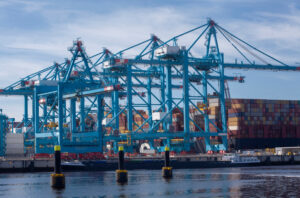Specialised reefer ships carry a disproportionate amount of cargo, but that will change in time, according to Drewry’s latest Reefer Shipping Market Annual Review & Forecast.
Specialised reefers in 2015 provided just 5% of the world’s reefer capacity, but carried over 23% of the cargo.
The specialised mode’s USP of a Fast, Direct and Dedicated (FDD) service appeals to many industry segments and will ensure that its disproportionate cargo-to-tonnage share will continue. However, even though the specialised mode will continue to punch above its weight in terms of market share, its decline – both in terms of number of vessels and market share – is inevitable.
As of mid-2016, Drewry pegged the specialised reefer capacity at 231.9 million cubic feet, which was dwarfed by the reefer capacity on containerships that stood at 4,242 million cubic feet.
With an average age of 26 years and a limited newbuilding orderbook, the future of the specialised reefers contrasts heavily with that of the reefer containership fleet – with an average age of 12 years and an orderbook comprising over 400 vessels.
Improving container technology along with the containership lines’ attraction to the relatively high-paying reefer cargo will ensure its desire to increase market share continues too.
Technical Paper: Challenges for the Containerised Reefer Trade
The rate at which this modal split widens continues will be dependent, in part, upon how quickly the aged and specialised reefer fleet is dispatched to the scrapyards.
The landscape has been blurred a little by the decision of the largest specialised reefer operator – Seatrade – to build a number of fully containerised reefer vessels, yet operate them under the FDD concept.
The effect this may have on the industry – and on future newbuildings – is keenly anticipated. Drewry’s Reefer Shipping Market Annual Review & Forecast found that despite less-than-perfect economic and commercial conditions, the perishable reefer trade still managed to grow in 2015 – albeit by just 0.5%, reaching almost 192 million tonnes.
The Drewry report reviews the recent economic and commercial issues that have affected global reefer trade – as well as the impact of El Nino – along with future growth in both population and GDP and takes a view on the future cargo growth annually through to 2020.
And for the first time, Drewry has examined the containerised reefer trades on a commodity-by-commodity basis – as well as provided a detailed analysis of volumes on key individual trade lanes, highlighting the 2014 versus 2015 changes.
The Drewry View: While both tonnage provision and forecast cargo share for the specialised reefer mode will continue to reduce in coming years, it will keep shipping a disproportionate share of the reefer cargo as a result of both operational and customer preferences.









